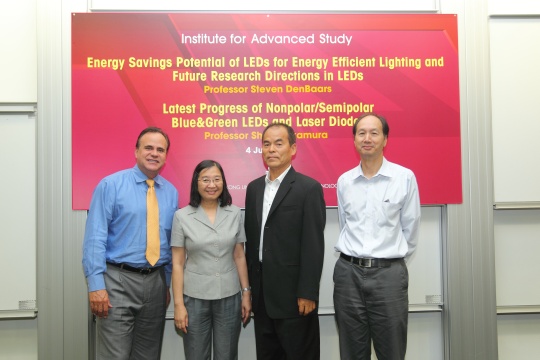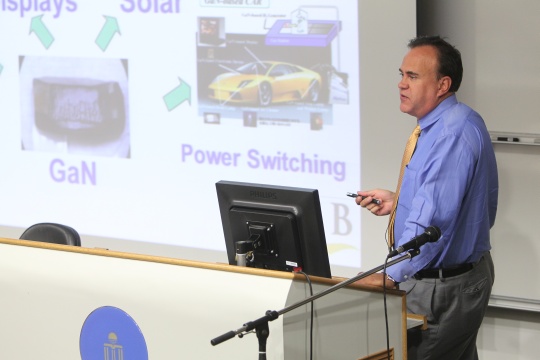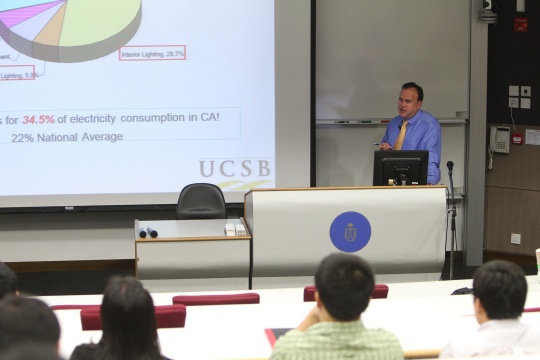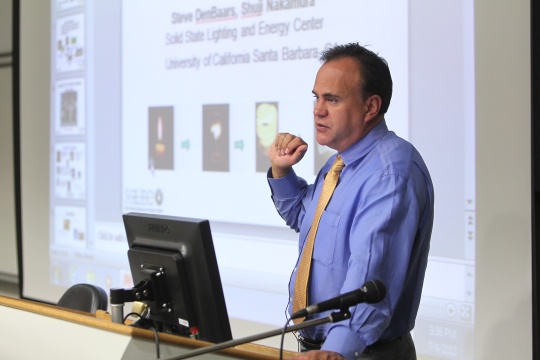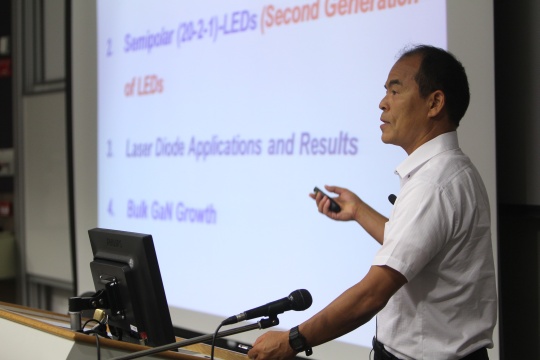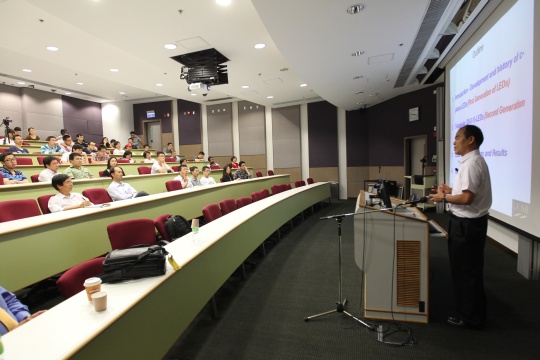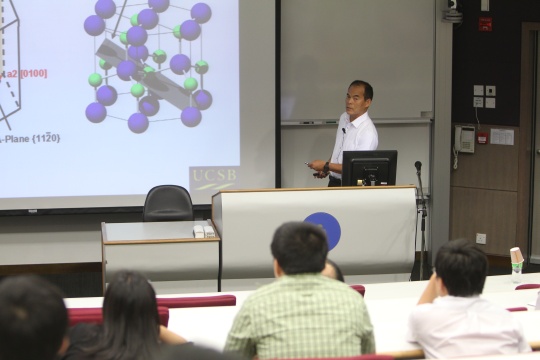Energy Savings Potential of LEDs for Energy Efficient Lighting and Future Research Directions in LEDs Latest Progress of Nonpolar/Semipolar Blue&Green LEDs and Laser Diodes
Talk 1: Energy Savings Potential of LEDs for Energy Efficient Lighting and Future Research Directions in LEDs (3:00 - 3:45 pm)
Abstract
LEDs fabricated from gallium nitride have led to the realization of high-efficiency white solid-state lighting. At UCSB’s Solid State Lighting and Energy Center the speaker has fabricated advanced GaN white LEDs structures which exhibit luminous efficacy greater than 170 lm/Watt, and external quantum efficiencies higher than 50%. This has enabled LEDs lighting to compete with traditional lighting technologies such as incandescent and CFL. A review of the energy savings potential of LED based lighting compared to traditional technologies will be addressed. The US Department of Energy estimates that in 2030 the energy savings from LED lighting in the US alone would amount to over $250 billion in energy savings, which is equivalent to 50 Gigawatt size power plants. Further improvements in materials quality and cost reduction are necessary for wide-spread adoption of LEDs for lighting. Solid-state lighting has the potential to achieve 85% energy efficiency, corresponding to 255 lm/Watt, and be able to run entirely off sustainable energy sources such as either solar, thermoelectric or wind. Key problems and new research directions in solid state lighting technologies will be highlighted. UCSB research on new crystal orientation shows great promise in achieving high efficiencies at high current densities and lowering the cost of LED lighting.
About the speaker
Prof. Steven DenBaars is a Professor of Materials and Co-Director of the Solid-State Lighting Center at the University of California, Santa Barbara (UCSB). He received his PhD in Electrical Engineering from the University of Southern California in 1988. From 1988-1991 Prof DenBaars was a member of the technical staff at Hewlett- Packard's Optoelectronics Division involved in the growth and fabrication of visible LEDs. He joined UCSB in 1991 and currently holds the Mitsubishi Chemical Chair in Solid State Lighting and Displays.
Prof. DenBaars’ research interests include growth of wide-band gap semiconductors (GaN based), and their application to Blue LEDs and lasers and energy efficient solid state lighting. This research has led to over 650 scientific publications and over 67 US patents on electronic materials and devices.
Prof. DenBaars has been awarded a NSF Young Investigator award, Young Scientist Award of the ISCS, IEEE Aron Kressel Award (with Prof. James SPECK). He is an IEEE Fellow and a Member of the US National Academy of Engineering.
Talk 2: Latest Progress of Nonpolar/Semipolar Blue&Green LEDs and Laser Diodes (3:45 - 4:30 pm)
Abstract
All of commercially available blue, green & white LEDs and blue laser diodes use c-plain (polar) GaN. The speaker and his group has developed nonpolar/semipolar GaN devices to create high efficient LEDs and laser diodes with an advantage of much smaller piezoelectric field and non-isotropic strain to change the valance band energy structure. As a result, the high efficient nonpolar/semipolar blue, green LEDs and blue&green laser diodes have been achieved. Among many kinds of semipolar LEDs, interesting characteristics of (20-2-1) semipolar LEDs were found. The efficiency droop of (20-2-1) semipolar blue LEDs with an external quantum efficiency of about 50% was very small at a current density of up to 400A/cm2. The spectrum width of (20-2-1) LEDs was much narrower than that of conventional c-pain and other semipolar/nonpolar LEDs. The blue-shift of the peak emission wavelength of (20-2-1) LEDs with increasing the forward current was almost negligible in comparison with that of the conventional c-plain or other semipolar/nonpolar LEDs. These results suggest that InGaN layer of the semipolar (20-2-1) plain is homogeneous. The latest results of those devices and material growth are described including bulk GaN crystal growth using the Ammonothermal method.
About the speaker
Prof. Shuji Nakamura obtained his bachelor’s and master’s degrees in electronic engineering in 1977 and 1979 respectively, after which he joined the Nichia Chemical Industries Ltd in Japan. It was while working for Nichia that Prof Nakamura invented the first high brightness GaN LED whose brilliant blue light is (when partially converted to yellow by a phosphor coating) the key to white LED lighting, and which went into production in 1993. He was awarded a Doctor of Engineering degree by the University of Tokushima in 1994. He left Nichia Chemical Industries Ltd in 1999 and joined the University of California at Santa Barbara. Widely recognized as pioneer in light emitters based on wide-bandgap semiconductors, Prof Nakamura continues to focus on development of GaN thin film technology. He won the 2006 Millennium Technology Prize for his invention of blue and white LEDs. He was elected as a member of the US National Academy of Engineering in 2003. He holds more than 100 patents and has published more than 400 papers in his field.

